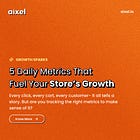Decoding Website Sessions: Your Key to Unlocking User Behaviour
This guide breaks down sessions in an easy-to-understand way, and teaches you how to use them to improve your site.
Ever wonder what really happens after someone clicks onto your website? It’s not just some random visit; it's the start of a journey we call a "session." Are they really digging what you're offering, or just passing through? That’s where understanding website sessions comes into play - and trust us, it's way more crucial (and fascinating!) than you might think.
So, What Exactly is Session
Think of a customer strolling into a physical store. They browse the aisles, maybe pick up a few items, and eventually head out. A website session is pretty much the same thing, just digital.
A session represents a single visit to your website or app by a user, capturing everything they do within a specific timeframe. It's like a container holding all of a user’s interactions, such as:
Page Views: Exploring product pages, your “About Us” section, or blog posts.
Clicks: Adding items to their cart, clicking on a banner ad, or using your search bar.
Transactions: Completing a purchase, subscribing to your newsletter, or filling out a form.
Events: Playing a video, downloading a file, or engaging with a quiz.
Essentially, a session is the complete visit experience, from the moment a user lands on your site until they leave or become inactive. It’s the full picture.
How Do We Actually Track These Sessions?
Web analytics tools use some clever tech to track sessions:
Each user's device (laptop, phone, tablet) gets a unique ID. This allows us to differentiate between users. If someone visits your site on their laptop and then their phone, that’s two different users for tracking.
A session kicks off the second a user lands on your site, whether it’s direct entry, referral links, or through paid traffic. Every action they take (clicks, views, etc.) gets recorded as part of that ongoing session.
When Does a Session Actually End?
A session automatically wraps up when:
There's been no activity for 30 minutes.
It hits midnight in your websites time zone.
A customer enters through one marketing campaign, leaves, then returns through a different one.
The browser is closed.
For example, if a user browses your store for 10 minutes, gets pulled away by a call for 35 minutes, then comes back, that's two separate sessions because they exceeded the 30-minute inactivity threshold.
Key Session Metrics You Absolutely Need to Be Tracking
Session Duration
Total Session Duration = Last Interaction Timestamp - First Interaction TimestampIf a customer enters your store at 2:00 PM, browses, and makes their last click at 2:15 PM, that's a 15-minute session.
Pages per Session
Pages per Session = Total Pageviews / Total SessionsIf your store had 1,000 total pageviews across 200 sessions today, your pages per session is 5.
Session Conversion Rate
Session Conversion Rate = (Number of Conversions / Total Sessions) × 100If you had 1,000 sessions and 30 purchases, your conversion rate would be 3%.
Sessions Per User
Sessions Per User = Total Number of Sessions / Number of Unique UsersIf you had 2,000 sessions from 500 unique users this week, your sessions per user would be 4, indicating that on average, each customer visited your store four times before making a decision.
Why Are Sessions Absolutely Crucial?
Sessions aren't just cold numbers; they're the bedrock of understanding your audience and fine-tuning your website. Here's why they're a big deal:
Understanding User Journeys: Sessions show you how users navigate your website, what products they check out, and where they might hit roadblocks. Are they finding what they need easily, or are they getting lost in the weeds?
Measuring Marketing ROI: By tracking session sources, you can pinpoint which marketing channels (Google Ads, Social Media, email) are pulling in the most engaged traffic and which aren't performing as well, which means you can make smarter choices with your marketing budget.
Identifying Trends and Issues: Analyzing session data helps you spot trends, allowing you to capitalise on them. It also highlights anomalies in user behavior, which could signal problems on your site.
Attribution: Sessions are key for giving credit to the touchpoints that lead to a conversion, so you can understand which marketing activities are actually driving your bottom line.
What Actually Impacts Sessions?
Several elements influence the quality and length of a session:
User Experience (UX): An intuitive and easy-to-use site design encourages users to hang around longer. A confusing mess, however, will send them packing.
Content Quality: Engaging content that speaks directly to user needs will keep them browsing. Poor-quality content, on the other hand, often leads to quick exits.
Website Speed: A fast-loading site is non-negotiable; slow load times will drive users away, no matter how valuable your content is.
SEO Practices: Effective SEO will increase website visibility, which in turn will lead to more visitors and increased sessions.
Marketing Channels: Different channels, such as email, paid ads, or social media, will affect the quality of the users they drive to the website.
User Intent & Behaviour: Users' own reasons for visiting and their behavior can affect how long they stick around. Those ready to buy will linger on product pages, while those just doing research might bounce quickly.
How Can You Improve Your Session Metrics?
Here are some strategies to level up your website sessions:
Enhance User Experience: Make sure your site is easy to navigate, responsive on all devices, and visually appealing.
Create Compelling Content: Develop informative, engaging, and high-quality content that meets the needs of your audience.
Optimise Site Speed: Compress images, minimise code, and use a reliable hosting service for fast loading times.
Personalise Content: Offer customised product recommendations and offers based on user behaviour.
Reduce Bounce Rate: Ensure your landing pages are relevant to the user's query, engaging, and make it easy to navigate the website.
Implement Internal Linking: Create clear links within your site to guide users to related content and keep them exploring.
Use Multimedia Content: Add images, videos, and infographics to boost user engagement.
SEO Optimisation: Use relevant keywords to improve search engine ranking and drive organic traffic.
Interactive Elements: Include quizzes, polls, and interactive tools to keep users engaged.
Sessions vs. Users vs. Pageviews – What’s the Difference?
It's crucial to understand how these terms differ:
Users: These are unique individuals visiting your site. One user can have multiple sessions.
Sessions: Refer to the total number of visits to your site, including repeat visits from the same user.
Pageviews: These are the number of times a page is viewed, including multiple views of the same page by the same user during a single session.
Sessions in E-Commerce – Why They Really Matter
For e-commerce businesses, sessions are particularly crucial:
Understanding User Behaviour: Sessions help e-commerce stores understand how users browse products, add items to carts, and checkout.
Performance Analysis: Sessions highlight how well marketing campaigns perform in driving quality traffic.
Conversion Rate Optimisation: Session data identifies friction points in the conversion funnel that may cause users to abandon their cart or potential sale.
Typical Session Duration: Aim for 2-3 minutes or longer. This is a good indicator of users engaging with your products.
Typical Bounce Rate: Under 50% is a good goal for e-commerce sites, indicating that most users are exploring more than one page.
Typical Conversion Rate: A conversion rate of 1-3% per session is considered typical, with better rates possible through optimisation.
The Secret Sauce: Making Sessions Work Harder
Want to know what separates successful website from the rest? It's how they leverage session data. Here are some proven strategies:
Enhance User Experience
Remember the last time you left a website because it was too slow or confusing? Your customers feel the same way. A client of ours reduced their page load time by 2 seconds and saw their average session duration jump by 40%. Speed matters big time.Create Compelling Content That Converts
Think about your favourite online store. What makes you want to keep browsing? Is it the detailed product descriptions, the high-quality images, or the helpful size guides? Your content should answer questions before customers even ask them.Smart Personalisation
Ever noticed how Amazon shows you products related to your browsing history? That's session data at work. You can start small - even just showing “Recently Viewed Items” can significantly boost engagement.
Making It Work For Your website
Ready to put this knowledge to work? Start by asking yourself:
Do you know where your most valuable sessions are coming from?
What's your average session duration for customers who actually make a purchase?
Which products or pages are keeping your visitors most engaged?
Understanding sessions isn't just about gathering data - it's about using that data to build a better shopping experience. Each session tells a story about your customer's journey, and each story holds clues about how to make your store even more successful.
Want to know other metrics you should be tracking everyday? Checkout this Article
Ready to Optimise Your Conversions with AI?
Tired of guessing and ready to start seeing real results? Aixel is building the future of marketing, one intelligent insight at a time. Aixel helps you stay on top of your store performance and provides you ai-driven insights to increase your conversions.
Join the waitlist at Aixel.io today and be among the first to experience the power of AI for your marketing.




